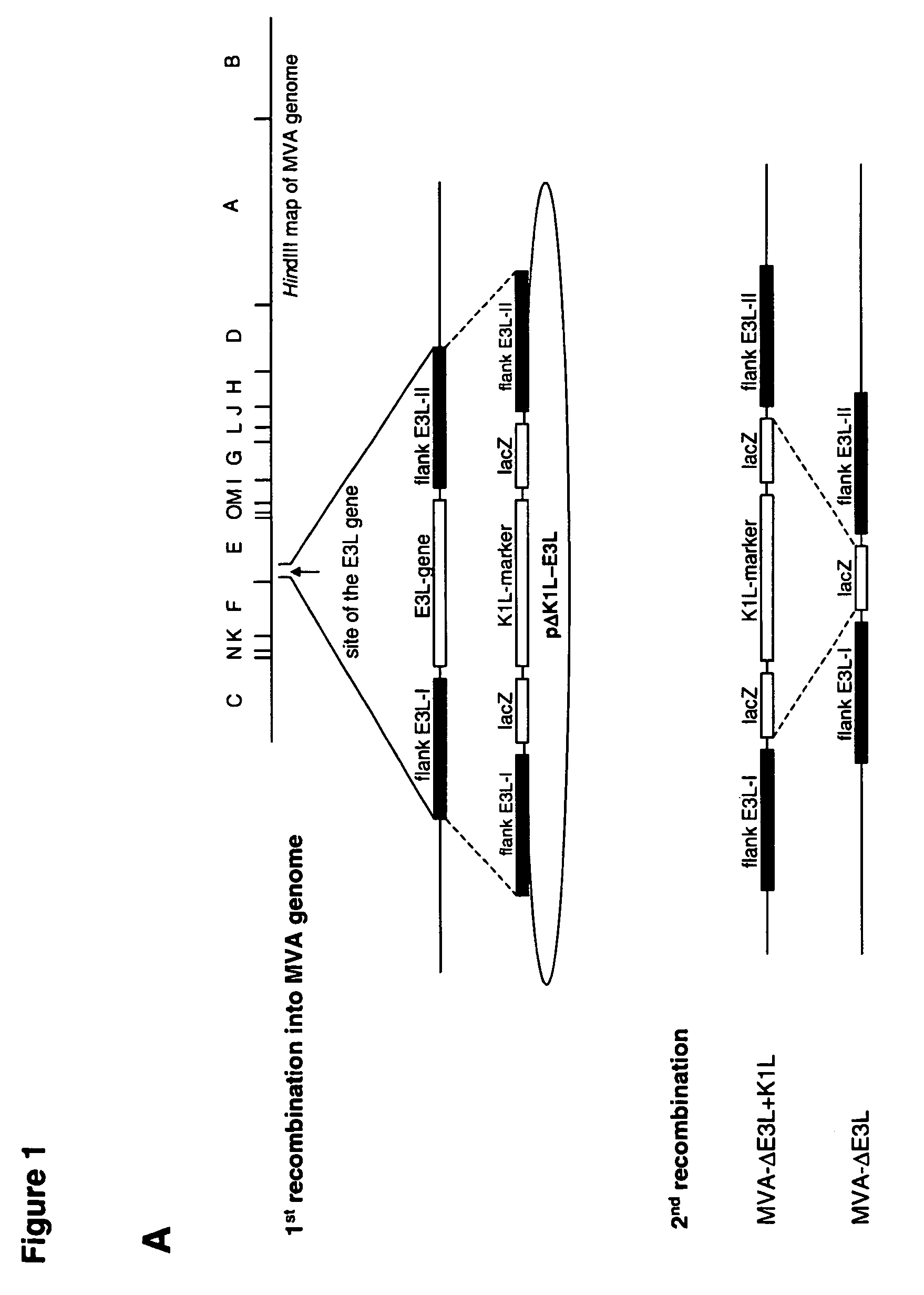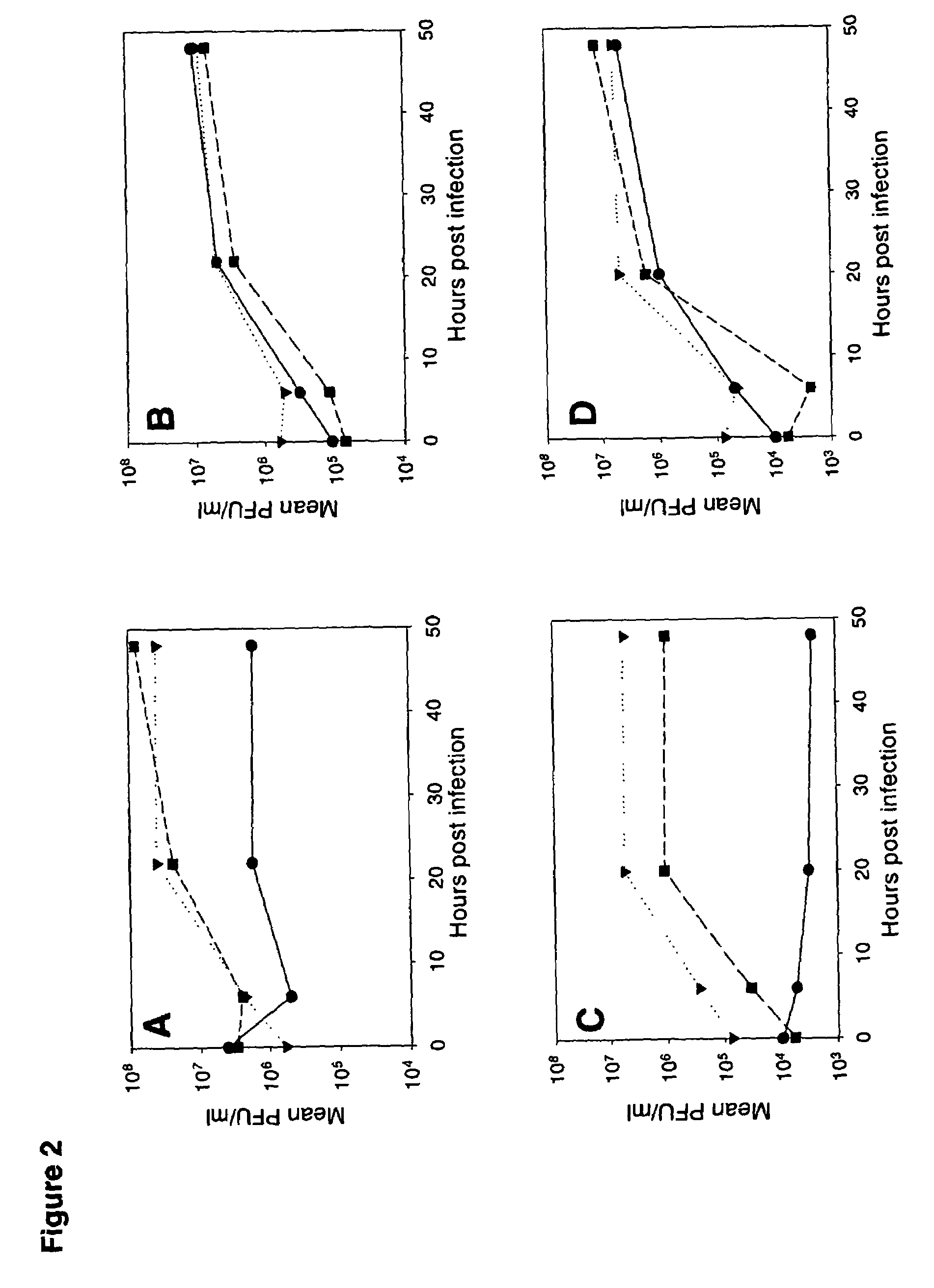Vaccinia virus MVA-E3L-knockout-mutants and use thereof
a technology of vaccinia virus and knockout, which is applied in the field of mva knockout mutant vaccinia virus, can solve the problems of possible future applications of recombinant vaccinia virus, the infectious nature of vaccinia virus, and the safety concerns of its use as expression vector in the laboratory, so as to quickly and efficiently produce recombinant mva, and save the growth capacity of the virus
- Summary
- Abstract
- Description
- Claims
- Application Information
AI Technical Summary
Benefits of technology
Problems solved by technology
Method used
Image
Examples
examples
1. Growing and Purification of the Viruses
1.1 Growing of the MVA and the MVA-ΔE3L Virus
[0054]The MVA virus is a greatly attenuated vaccinia virus produced by serial passages of the original CVA strain on chicken embryo fibroblast (CEF) cultures. For a general rewiew of the history of the production, the properties and the use of the MVA strain of vaccinia, reference may be made to the summary published by Mayr et al. in Infection 3, 6–14 [1975]. Owing to the adaptation to CEF, growth of the MVA virus on other cell systems is greatly restricted. Exceptionally, baby hamster kidney cells (BHK-21), a well characterized, easily maintained cell line, supports MVA growth and as proficient expression of recombinant genes as the highly efficient CEF and has been recommended for standardized MVA propagation during the development of expression vectors and live recombinant vaccines (Drexler et al. 1998, J. Gen. Virol., 79, 347–352).
[0055]The MVA virus was normally grown on CEF cells, the host ...
PUM
| Property | Measurement | Unit |
|---|---|---|
| Volume | aaaaa | aaaaa |
| Therapeutic | aaaaa | aaaaa |
| Nucleic acid sequence | aaaaa | aaaaa |
Abstract
Description
Claims
Application Information
 Login to View More
Login to View More - R&D
- Intellectual Property
- Life Sciences
- Materials
- Tech Scout
- Unparalleled Data Quality
- Higher Quality Content
- 60% Fewer Hallucinations
Browse by: Latest US Patents, China's latest patents, Technical Efficacy Thesaurus, Application Domain, Technology Topic, Popular Technical Reports.
© 2025 PatSnap. All rights reserved.Legal|Privacy policy|Modern Slavery Act Transparency Statement|Sitemap|About US| Contact US: help@patsnap.com



